As the 5th London Design Biennale opens at Somerset House, Sarah Simpkin explores a quieter, more contemplative edition shaped by artistic director, Samuel Ross’s theme, Surface Reflections. Following her piece on last month’s Venice Architecture Biennale, here she identifies shared trends, enjoys Poland and Malta’s meditations on time and memorial, and wonders if design festivals might be more collaborative, with each other

It’s raining and I’m late to Aldwych for the start of the 5th London Design Biennale. No canals, no sun, no tiny little sandwiches. London feels like Venice, decaffeinated.
I expect to be greeted by some great Thing in the Somerset House courtyard, but it’s empty of branded archways or Instagram bait. Just wet cobbles and the ordered neoclassical panorama that conceals the infernal maze behind its walls.
It turns out to be a sign that this year, spectacle gives way to something more reflective, in tone and theme. ‘Surface Reflections’, conceived by artistic director, Samuel Ross, investigates our personal histories, the experiences and influences that fuel design ideas.
Victoria Broackes, director of the London Design Biennale
Late to the press conference, I miss the speeches but find myself alone in the hall with Victoria Broackes, the Biennale’s director. With the poise of a dishevelled Columbo, I ask how, with Venice’s 19th architecture launch still fresh, London’s compares.
London “models itself on Venice” for international collaboration, she tells me. There are 35 main exhibits, but many more cross-national collaborations, including 30 countries under Azerbaijan’s banner and seven via the World Monuments Fund. “We’re spanning six continents,” she says, but the real purpose goes beyond geographical spread to interrogate the nature of design in 2025: “What can it do?”
She points to a new research and innovation strand, and a collaboration between Northumbria University and UCL to investigate growing building materials. “These are experimental materials,” Broackes says, “we’re not sure what is going to happen.”
Biofabrication was also the subject of Canada’s pavilion in Venice: an incubator testing the ability of unsettling 3D-printed Aliens to sequester carbon. In London, it’s a more conventionally useful laboratory, showing different material growths aided by microbes and fungi. I walk in at the exact moment a researcher tells a visitor, “The smell? It could be this polymer. Here’s the E. coli…” and quickly backtrack. It’s enough for me to know that building matter could be grown.
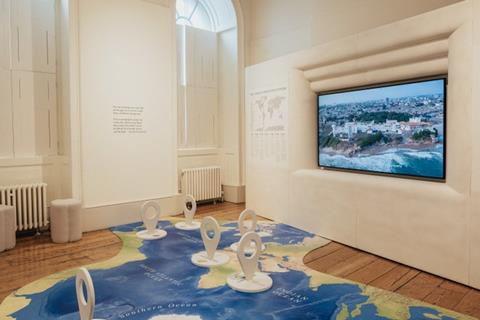
Other installations focus on the potential for loss rather than growth, such as English Heritage and the World Monuments Fund’s Coastal Connections space, curated by Vanessa Norwood. A map on the floor pinpoints seven sites affected by issues like coastal erosion and rising sea levels, with accompanying films (and solutions) – an interesting view on the world from the ocean’s perspective, with land secondary.
“Every day can be different,” Broackes tells me, starting to explain some of the many workshops, talks, activations and screenings, as she’s ushered away to the next event. Following her advice, I tackle each wing in turn, then the galleries along the Embankment.
Malta: URNA
I enter a small room dominated by a monumental stone ball. Malta’s (medal-winning) piece, URNA, explores new rituals and memorials for the dead, following the legalisation of cremation in 2019 as a more financially and spatially economical solution for the island. Each ring represents a person, the stone mixed with their ashes – the ball is a poetic, collective structure, returned to the landscape.

Architect Thomas Mifsud from Urna’s creative team explains the circularity of the material. “All the material on our island was once alive… made from hundreds of millions of fossils, fish, sea and corals that once filled these waters and slowly formed strata of rock… we think of ourselves as part of that story.” Stone, he explains, is part of Maltese identity. “Everything has this yellowy golden hue, everything is built with this – for us, it’s home.” In workshops, students explored how this idea might translate globally, from Icelandic volcanoes to South African sandstone.
Poland: Records of Waiting
Poland’s Records of Waiting uses the patient act of woodcarving to make the experience of waiting tangible. As in Venice, a team of Polish curators has delivered social commentary with wit and conceptual and graphic clarity (and win a medal for the most inspiring interpretation of the Biennale’s theme).
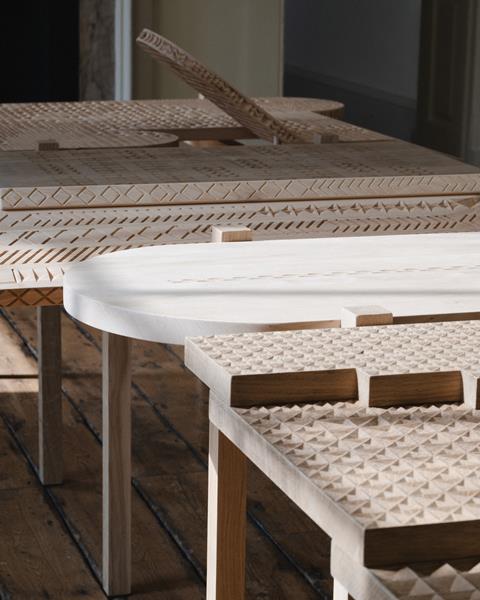
Their inspiration comes from Podhale, a mountainous region in southern Poland, where shepherds passed the time carving intricate patterns into wood. A series of tactile panels embed periods of waiting related to inequality, identity and everyday life into this woodcraft tradition. 6 hours 15 minutes: the average time a driver spends in traffic jams in Łódź. Or, 13 years: the average time it takes for a Polish citizen to repay a mortgage.
Common theme: what are we doing here?
There’s an echo of Venice’s themes in exhibits that question the nature of participation: What’s a biennale for? Who am I? What am I doing here? Is that curtain made of real hair?
In Venice, Switzerland reimagined its pavilion through a female lens, Denmark dug up its floor. Here, the Netherlands presents a book unpacking outdated expo formats and geopolitical models. Another thread carried through from the Giardini is geology and repair. The Chilean pavilion honours local, small-scale miners and ancestral knowledge within the vast global industry of extraction.
Overall, it feels more policy and ideas-based, with spaces taken over by UCL’s Institute for Global Prosperity, the Design Council and Life Calling’s Notes to Humanity. Here, visitors are invited to reflect and write (on paper, at a nice desk) their thoughts on what constitutes humanity in the digital age. I think about the trees in our communal garden, under threat from felling, and advocacy for nature.
Clouds and desert palms
Japan’s Paper Clouds, by Kuma Lab’s Toshiki Hirano and curated by Clare Farrow, floats sheets of translucent washi paper up through the Nelson Stair to a haunting score. It continues Kengo Kuma studio’s investigations into the quiet strength of washi and its potential as a building material.
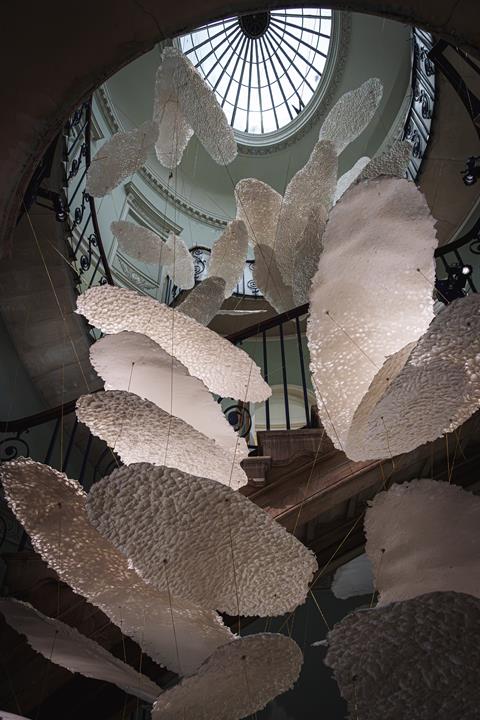
It’s not the only country to take a quieter approach for this edition. Abu Dhabi offers a subtle reflection on pearl diving, a contrast to Dubai’s dramatic 2023 dune room. The USA is absent (or lost, it is Somerset House). By contrast, Qatar’s Matter Diplopia is full of energy. Beside the dried leaves of a date palm bearing golden fruit, artist Ghada Al Khater explains the Biennale’s collaboration with VCUarts Qatar, which gives the sense this event has an impact far beyond June.
The case for an even bigger biennale?
The design mantra “only as strong as the weakest point” doesn’t hold true in vast shows like these. Yes, some spaces felt less engaging, but a few are really excellent and worth spending time with.
However, beyond Somerset House, it feels like London’s overlapping summer festivals for design and architecture have sprawled. Each has its colour: London Festival of Architecture and Clerkenwell Design Week share hot pink, London Design Festival lobster red, London Design Biennale closer to EasyJet orange, with blue and bright highlights. Rather than build sunset-hued momentum together, though, each speaks to its own slightly different audience, while trying to engage a public that could be forgiven for feeling confused.
It feels like a communications and organisational challenge: either go niche, find sharper differentiation beyond ‘London’, or go big. Why not one colour, one month, one massive, joined-up local and international architecture and design event, with a coherent organising principle? I don’t know… a clear design? That would be exciting.
Postscript
London Design Biennale runs from 5th-29th June at Somerset House: https://londondesignbiennale.com
Sarah Simpkin is a writer and communications consultant.


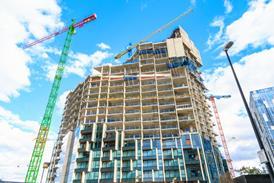
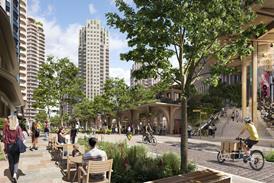

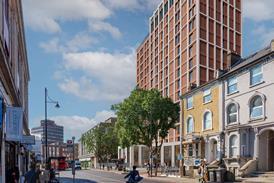

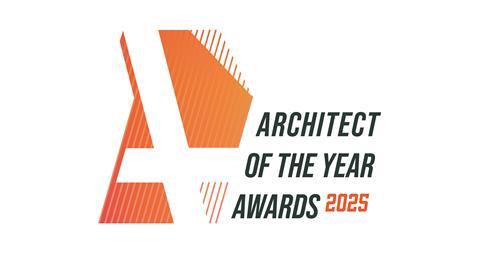








No comments yet